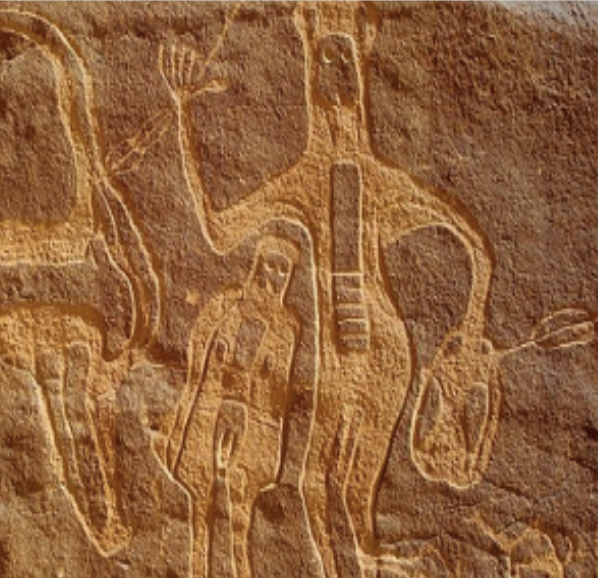Report by Gurpreet Kaur
Fuzhou, July 26: During its 44th session held online in Fuzhou (China), UNESCO marked 5 cultural sites including a transnational property on its heritage list. UNESCO (United Nations Educational, Scientific, and Cultural Organization) world heritage site is a landmark that has cultural, historical, scientific, or other forms of significance.
The new sites inscribed are –
- Hima Cultural Area, Saudi Arabia:
This site is located in the arid mountains of southwest Arabia. It depicts rock carvings of human, flora, and fauna. This 7,000 years old site is rich in un-excavated archaeological resources like cairns (a prehistoric burial mound made of stones), stone tools, and ancient walls with many scripts. The scripts include Aramaic- Nabataean, South-Arabian, Thamudic, Greek, and Arabic scriptures. This site is also the oldest known toll station (a toll station is a place where you pay to use the road).

2. The Great Spa Towns of Europe:
This is the transnational site of the Great Spa Towns of Europe. It is made of 11 towns, in seven European countries: Baden bei Wien (Austria), Spa (Belgium), Františkovy Lázně (Czechia), Karlovy Vary (Czechia), Mariánské Lázně (Czechia), Vichy (France), Bad Ems (Germany), Baden-Baden (Germany), Bad Kissingen (Germany), Montecatini Terme (Italy), and City of Bath (United Kingdom).
All of these have developed around the natural mineral water springs and are witness to the European spa culture. The European spa culture developed around the early 18th century.

3. Cordouan Lighthouse, France
At the mouth of Gironde estuary rises this magnificent lighthouse built in limestone, on a rocky plateau, in the Atlantic Ocean. It was built by Joseph Teulère in the 18th Century.
It illustrates the art of building lighthouses. It was built in the period when beacons played an important role in territorial marking and as an instrument of safety.

4. Padua’s fourteenth- century fresco cycles, Italy
This site is made of eight secular and religious complexes, within the walled city of Padua. The historic city has a selection of fresco cycles painted between 1302 and 1397 by different artists from different patrons.

5. Mathildenhöhe Darmstadt, Germany
The highest elevation above the city of Darmstadt in west-central Germany is the Mathildenhöhe Darmstadt. It was constructed in 1897 by Ernst Ludwig, Grand Duke of Hesse. It was established as a center for emerging reform movements in architecture, art, and craft. It was created as an experimental early modernist living and working environment.
The property consists of two parts. It includes 23 elements like a wedding tower, exhibition hall, plane tree grove, the Russian Chapel of St. Maria Magdalena (1897-99), etc.

6. Emporium of the World in Song-Yuan China:
The site consists of religious buildings like the 11th century Qingjing Mosque. It is one of the earliest Islamic buildings in China. There are many other archaeological remains at the site like stone docks that were important for commerce and defence, administrative blocks, sites of iron production, ancient bridges, pagodas, and inscriptions known as Zayton in Arabic and western texts inscribed on the walls.

7. Kakatiya Rudreshwara (Ramappa) Temple, Telangana (India)
Ramappa temple, in Palmape, Mulugu, is also known as Ramalingeshwara or Rudreshwara temple and dates back to 1213 AD. General Recharla Rudra built the temple. As the name suggests it was built during the Kakatiya king Ganapati Deva’s rule. The temple is known for its intricate carving. It took over 40 years to build the temple. It is made of sandstone.
The temple has beams and pillars of carved granite and a pyramidal horizontally stepped tower (vimana) made of ‘floating bricks’, which reduces the roof’s weight. The temple building followed the ideology and practice of dharmic texts of how a temple should be built.

8. Trans-Iranian Railway (Iran)
The Iranian railway connects the Caspian Sea in the northwest to the Persian Gulf in the southwest. It crosses two mountain ranges and four different climatic areas.
Its construction started in 1927 and ended in 1938. It is a 1,394 km long railway. It was built by 43 construction contractors around the globe. Its construction involved 186 small bridges, 11 spiral tunnels, 174 large bridges, 224 tunnels.

9. Paseo del Prado and Buen Retiro, a landscape of Arts and Sciences (Spain)
This 200-acre cultural landscape is in the urban heart of Madrid. It is an architectural marvel of art and science and has evolved since the 18th century. The property includes Retiro Park, the boulevard Paseo del Prado, and the neighborhood in between. Among its most significant buildings are the Royal Studio of Natural History (today called the Prado Museum), the Palacio Cibeles, and the Atocha railway station.


